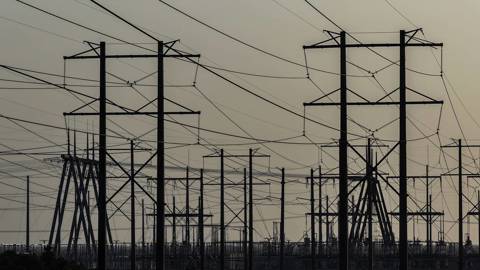Taiwan’s experience offers valuable lessons for China. Perhaps the most important one concerns the “financialization of innovation,” whereby technology investment is funded by risk capital from the stock market, rather than by the risk-adverse banking system.
HONG KONG –Ma Ying-jeou, Taiwan’s president from 2008 to 2016, who last year became the first former or sitting Taiwanese leader to visit mainland China, made a return trip in April. His 11-day visit, which included a meeting with Chinese President Xi Jinping, is significant not only because it highlighted the two sides’ historical and cultural links, but also because it refocused the Chinese government’s attention on areas where it could learn from and cooperate with Taiwan.
A small island with few natural resources, Taiwan punches well above its weight economically. From 1980 to 2008, Taiwan’s annual real GDP growth averaged 6.8% – significantly higher than the under-2% average in OECD countries. While growth slowed after the 2008 global financial crisis, it stabilized relatively quickly. Today, Taiwan is the world’s 22nd largest economy, with a GDP of $803 billion, and ranks 14th in per capita purchasing-power-parity terms. Taiwan’s GDP per capita in PPP terms stood at $73,000 last year, compared to just $3,500 in 1980.
Moreover, Taiwan’s stock market is thriving. At the end of last year, its total stock-market capitalization amounted to 241.4% of GDP, much higher than in mainland China (61.3%), South Korea (114.4%), Japan (146.6%), and even the United States (158.4%). Taiwan’s 1,001 listed companies have an average price-to-earnings (P/E) ratio of 24.6, strongly outperforming Chinese companies (9.08).
But just one firm, Taiwan Semiconductor Manufacturing Company (TSMC), accounts for one-third of the stock market’s total value. Taiwan dominates the global semiconductor-manufacturing industry, supplying over 60% of the world’s semiconductors, and more than 90% of the most advanced chips – the vast majority produced by TSMC.
The company’s P/E ratio is particularly high, at 26.34. To put that in perspective, the average P/E ratio of mainland China’s seven biggest tech firms (Baidu, Alibaba, Tencent, CATL, BYD, Foxconn, and Xiaomi) is just 17.70. Together, those firms have a market capitalization of $971.89 billion, compared to $718.40 billion for TSMC alone.
Taiwan’s emergence as a global technological powerhouse was no accident. In the 1980s, following two oil crises, Taiwan’s economy was beset by structural challenges. As the Chinese market opened up, the island’s low-wage competitive advantage was diminished. This, together with America’s 1988 decision to end special trade preferences for Taiwan, as well as for Hong Kong, Singapore, and South Korea, caused Taiwan’s average annual export growth to slow sharply, from 26% in 1971-80 to just 9.44% in 1981-90.
By that time, however, Taiwan, under President Chiang Ching-kuo, was already pursuing an economic-reform program based on “economic liberalization, globalization, and systemization.” For example, the government relaxed foreign-exchange controls, privatized banks, and opened the way for foreign banks to expand their operations in Taiwan.
Taiwan also established the Hsinchu Science Park, modeled after Silicon Valley, in 1980, in order to create an ecosystem for basic research and technological innovation. As of last month, nearly 600 companies – including telecommunications, optoelectronics, precision-machinery, and biotechnology firms – are operating there.
Taiwan’s efforts to bolster its high-tech industries clearly worked. In 1984, Taiwan’s exports of electronic products reached nearly $6.6 billion, surpassing textile exports worth $6.1 billion. By 1989, Taiwan accounted for 25% of global personal-computer output. And within a few decades, the island would control the global semiconductor industry.
Today, Taiwan’s government continues to encourage economic dynamism. Its “Statute for Industrial Innovation,” for example, aims to bolster competitiveness through measures like tax incentives, direct government investment, and support for relevant worker training.
At the same time, Taiwan maintains a prudent fiscal and monetary policy. Its government debt-to-GDP ratio is just 25% – one-quarter of the OECD average. And as of March 2024, Taiwan held the world’s fifth-largest stock of foreign-exchange reserves ($568.1 billion), behind only China, Japan, Switzerland, and India.
Taiwan’s experience offers valuable lessons for China. Perhaps the most important one concerns the “financialization of innovation,” whereby technology investment is funded by risk capital from the stock market, rather than by the risk-adverse banking system.
In Taiwan, this process led to a virtuous cycle of technological progress and stock-market gains. From April 1, 2003, to April 1, 2024, the Taiwan Weighted Index grew by 8.55% annually, on average. That is much faster than the 3.77% average annual increase in the Shanghai Composite Index over the same period, and only slightly below the 10% annual growth rates for NASDAQ and the S&P 500 in the US.
Fostering a similar virtuous cycle in China has become an urgent priority. Today, the real-estate sector contributes a whopping 30% of Chinese GDP. This leaves China exposed to US interest-rate hikes. Moreover, real-estate markets tend to shrink as a population ages, and China’s population is aging fast. Breakthroughs in artificial intelligence could offset real-estate losses and propel future growth, but funding AI investments requires a stock market able to take high-risk positions on new technologies.
Taiwan has more to offer China than inspiration. Taiwanese entrepreneurs were among the first to invest in upgrading China’s manufacturing and retail sectors – an effort that brought tremendous benefits for both sides. Similarly, cross-strait technological collaboration today can offer scale and market access to Taiwanese companies, while advancing the much-needed financialization of innovation on the mainland.











HONG KONG –Ma Ying-jeou, Taiwan’s president from 2008 to 2016, who last year became the first former or sitting Taiwanese leader to visit mainland China, made a return trip in April. His 11-day visit, which included a meeting with Chinese President Xi Jinping, is significant not only because it highlighted the two sides’ historical and cultural links, but also because it refocused the Chinese government’s attention on areas where it could learn from and cooperate with Taiwan.
A small island with few natural resources, Taiwan punches well above its weight economically. From 1980 to 2008, Taiwan’s annual real GDP growth averaged 6.8% – significantly higher than the under-2% average in OECD countries. While growth slowed after the 2008 global financial crisis, it stabilized relatively quickly. Today, Taiwan is the world’s 22nd largest economy, with a GDP of $803 billion, and ranks 14th in per capita purchasing-power-parity terms. Taiwan’s GDP per capita in PPP terms stood at $73,000 last year, compared to just $3,500 in 1980.
Moreover, Taiwan’s stock market is thriving. At the end of last year, its total stock-market capitalization amounted to 241.4% of GDP, much higher than in mainland China (61.3%), South Korea (114.4%), Japan (146.6%), and even the United States (158.4%). Taiwan’s 1,001 listed companies have an average price-to-earnings (P/E) ratio of 24.6, strongly outperforming Chinese companies (9.08).
But just one firm, Taiwan Semiconductor Manufacturing Company (TSMC), accounts for one-third of the stock market’s total value. Taiwan dominates the global semiconductor-manufacturing industry, supplying over 60% of the world’s semiconductors, and more than 90% of the most advanced chips – the vast majority produced by TSMC.
The company’s P/E ratio is particularly high, at 26.34. To put that in perspective, the average P/E ratio of mainland China’s seven biggest tech firms (Baidu, Alibaba, Tencent, CATL, BYD, Foxconn, and Xiaomi) is just 17.70. Together, those firms have a market capitalization of $971.89 billion, compared to $718.40 billion for TSMC alone.
Taiwan’s emergence as a global technological powerhouse was no accident. In the 1980s, following two oil crises, Taiwan’s economy was beset by structural challenges. As the Chinese market opened up, the island’s low-wage competitive advantage was diminished. This, together with America’s 1988 decision to end special trade preferences for Taiwan, as well as for Hong Kong, Singapore, and South Korea, caused Taiwan’s average annual export growth to slow sharply, from 26% in 1971-80 to just 9.44% in 1981-90.
SPRING SALE: Save 40% on all new Digital or Digital Plus subscriptions
Subscribe now to gain greater access to Project Syndicate – including every commentary and our entire On Point suite of subscriber-exclusive content – starting at just $49.99.
Subscribe Now
By that time, however, Taiwan, under President Chiang Ching-kuo, was already pursuing an economic-reform program based on “economic liberalization, globalization, and systemization.” For example, the government relaxed foreign-exchange controls, privatized banks, and opened the way for foreign banks to expand their operations in Taiwan.
Taiwan also established the Hsinchu Science Park, modeled after Silicon Valley, in 1980, in order to create an ecosystem for basic research and technological innovation. As of last month, nearly 600 companies – including telecommunications, optoelectronics, precision-machinery, and biotechnology firms – are operating there.
Taiwan’s efforts to bolster its high-tech industries clearly worked. In 1984, Taiwan’s exports of electronic products reached nearly $6.6 billion, surpassing textile exports worth $6.1 billion. By 1989, Taiwan accounted for 25% of global personal-computer output. And within a few decades, the island would control the global semiconductor industry.
Today, Taiwan’s government continues to encourage economic dynamism. Its “Statute for Industrial Innovation,” for example, aims to bolster competitiveness through measures like tax incentives, direct government investment, and support for relevant worker training.
At the same time, Taiwan maintains a prudent fiscal and monetary policy. Its government debt-to-GDP ratio is just 25% – one-quarter of the OECD average. And as of March 2024, Taiwan held the world’s fifth-largest stock of foreign-exchange reserves ($568.1 billion), behind only China, Japan, Switzerland, and India.
Taiwan’s experience offers valuable lessons for China. Perhaps the most important one concerns the “financialization of innovation,” whereby technology investment is funded by risk capital from the stock market, rather than by the risk-adverse banking system.
In Taiwan, this process led to a virtuous cycle of technological progress and stock-market gains. From April 1, 2003, to April 1, 2024, the Taiwan Weighted Index grew by 8.55% annually, on average. That is much faster than the 3.77% average annual increase in the Shanghai Composite Index over the same period, and only slightly below the 10% annual growth rates for NASDAQ and the S&P 500 in the US.
Fostering a similar virtuous cycle in China has become an urgent priority. Today, the real-estate sector contributes a whopping 30% of Chinese GDP. This leaves China exposed to US interest-rate hikes. Moreover, real-estate markets tend to shrink as a population ages, and China’s population is aging fast. Breakthroughs in artificial intelligence could offset real-estate losses and propel future growth, but funding AI investments requires a stock market able to take high-risk positions on new technologies.
Taiwan has more to offer China than inspiration. Taiwanese entrepreneurs were among the first to invest in upgrading China’s manufacturing and retail sectors – an effort that brought tremendous benefits for both sides. Similarly, cross-strait technological collaboration today can offer scale and market access to Taiwanese companies, while advancing the much-needed financialization of innovation on the mainland.